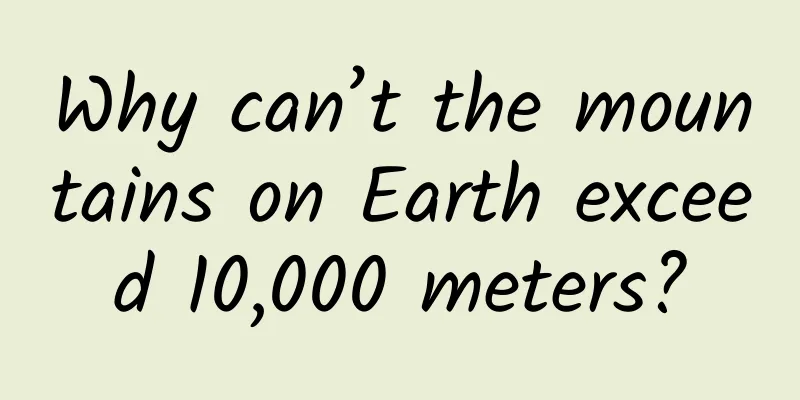The efficacy and function of Polygonum aviculare

|
As people's living standards improve, they pay more attention to health preservation. Many people know that the Chinese medicine Polygonum isatis indigotica is good for the body and can treat many diseases. Let’s learn about it today. [Other names] Dyeing grass, blue leaves, indigo leaves, indigo leaves, blue indigo leaves, green board water pepper, red stem Polygonum [Source] Medicinal material source: the stems and leaves of the Polygonum tinctorium of the Polygonaceae family. [Original form] Annual herb, 50-80cm tall. The stem is cylindrical, branched or unbranched, without B hairs, and with obvious nodes; simple leaves are alternate; petioles are 5-10mm long; there are sheath-like membranous stipules at the base, which are light brown, truncated at the apex, and have long eyelashes on the edges; the leaves are ovate or ovate-needle-shaped, 3-8cm long, 1.5-5.5cm wide, obtuse at the apex, rounded or cuneate at the base, entire, with cilia, and both sides are blue-green when dry. The spike inflorescence is terminal or axillary, arranged closely; the bracts are bell-shaped, nearly herbaceous, and have eyelashes; the flowers are small, red, and the perianth is 5-lobed, the lobes are obovate, and light red; there are 6-8 stamens; there is 1 pistil, the style does not extend, and the stigma is 3-branched. Achenes are elliptical, triangular or biconvex, brown, shiny, and enclosed in persistent perianth. The flowering period is from July to September, and the fruiting period is from August to October. [Habitat distribution] Ecological environment: Wild in the wilderness and beside ditches, mostly cultivated or semi-wild state. [Properties] Identification by properties: The leaves are mostly wrinkled or broken, blue-green or blue-black, and the midrib is khaki to light yellowish brown. The complete leaf blade is elliptical, 3-10cm long, 2-5cm wide, obtuse at the apex, gradually narrowing at the base, entire, with more prominent veins on the back, obvious lateral veins, and lighter color; the petiole is flat, about 1cm long, clasping the stem at the base, and with a membranous stipule sheath. It is brittle and easily broken. The smell is faint and the taste is light and slightly bitter. [Chemical composition] The whole plant of Polygonum tinctorium contains indirubin, indigo (indigotin), N-phenyl-2-naphthylamine, β-sitosterol, and laccerol [1]. Its aerial parts contain kaempferol-3-O-β-D-glucopyranoside and 3,5,4′-trihydroxy-6,7-methylenedioxyflavone-3-β-D-glucopyranoside [2]. In addition, it also contains tryptanthrin[3]. [Pharmacological action] 1. Anti-pathogenic microbial effect Tryptanthrin extracted from Polygonum indigoferum is a specific antibiotic for certain skin fungi and bacilli. Its MIC for Trichophyton mentagrophytes, Trichophyton rubrum, Trichophyton sulphureus, Microsporum canis and Epidermophyton floccosum is 3.1 μg/ml [1, 2]. Indole glycosides extracted from the leaves of Polygonum tinctorium have shown antiviral effects in tissue culture experiments and can alleviate pneumonia caused by influenza virus in mice, but cannot reduce the number of animal deaths[3]. 【Nature and flavor】 Bitter; cold 【Meridian】 Heart; Stomach meridian 【Functions and indications】 Clears away heat and detoxifies; cools blood and eliminates freckles. It is used to treat fever caused by febrile diseases; rash and rashes; vomiting blood and bleeding; throat paralysis; dysentery; jaundice; erysipelas; mumps; mouth sores; carbuncle [Usage and Dosage] For oral use: decoction, 9-15g, fresh product 15-30g; or mash into juice and drink. For external use: take appropriate amount, mash and apply; or mash and apply after sweating. [Clinical Application] It is used for fever caused by dampness, rashes and eruptions, cough and wheezing due to lung heat, throat paralysis, mumps, erysipelas, and carbuncles. 【Excerpt】 Chinese Materia Medica The above is a detailed introduction to the effects and functions of Polygonum aviculare. When choosing it, pay attention to the dosage to avoid causing harm to your body. |
<<: Effects and functions of Quercus liaotungensis
>>: The efficacy and function of lotus leaf tongquan grass
Recommend
Don’t want to be defeated by viruses in the cold winter? 5 self-checks for disease resistance
Have you been infected with the flu this season? ...
Many people don’t understand this disease that almost all parents have!
Are your parents starting to get presbyopia? Acco...
Can I drink saffron if I have uterine fibroids?
Uterine fibroids are a relatively common gynecolo...
Look! There’s an “ice cream” on the tree!
Review expert: Ran Hao, a well-known popular scie...
National Hypertension Day | You must not know these 5 misunderstandings about lowering blood pressure
Hypertension is the most important risk factor fo...
The efficacy and function of porcupine meat [picture]
In fact, the occurrence of many human diseases is...
The efficacy and function of wild lily
Traditional Chinese medicine requires the use of ...
The man next to Darwin invented weather forecasting
The winning works of the 2023 "China Science...
What are the medicinal values of tiger skin orchid
Sansevieria is also called Tiger Tail Orchid. The...
The efficacy and function of Panax notoginseng
Epanax notoginseng is a kind of traditional Chine...
Can eggs be "resurrected"? In the era of traffic, how can we correctly understand the true science?
The biological blogger "Huzhang" who id...
The new coronavirus variant is spreading rapidly in South Africa, and one case has been found in Hong Kong
On November 25th local time, the National Institu...
A dirty chip will affect performance. Here are four ways to clean it.
Do you usually wash dishes, vegetables, fruits or...
The efficacy and function of the leaves of the genus Goosefoot
The efficacy and function of the traditional Chin...
The efficacy and function of Amaranthus guanyinensis
We know that there are many kinds of Chinese medi...









